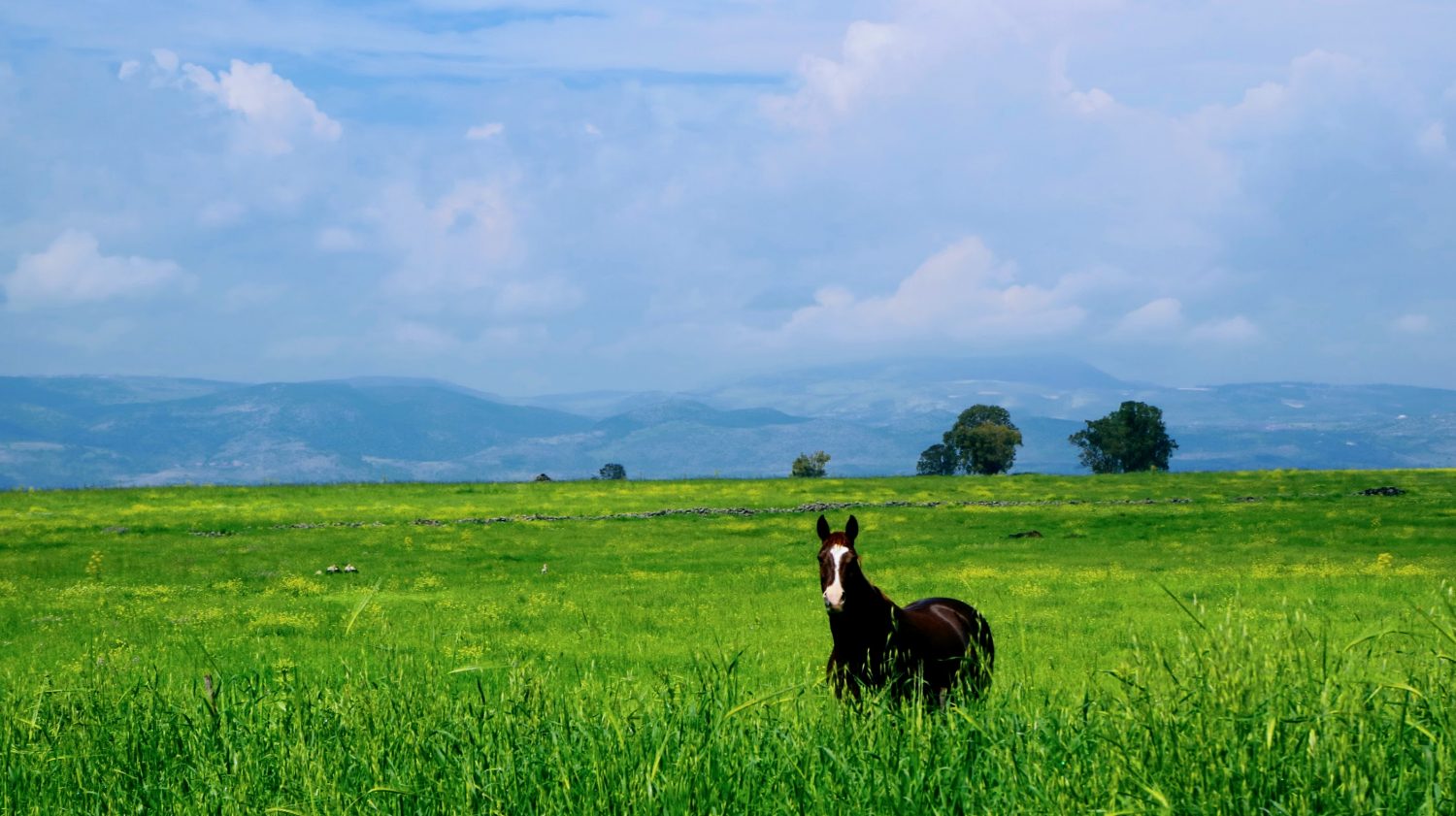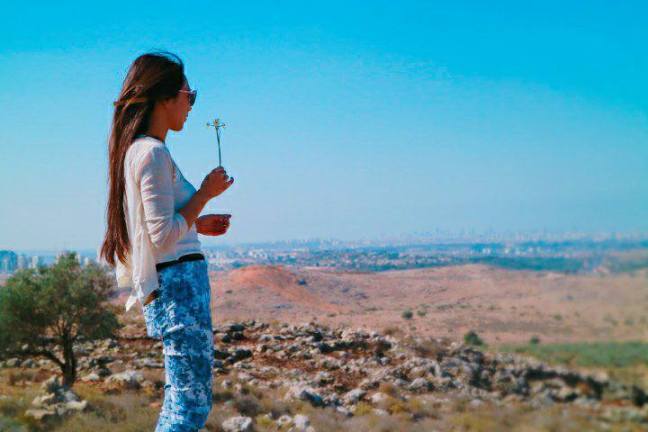[English follows]「オリーブ」について書くにあたり、前半を「5.約束の地カナンとオリーブの木」と題して、旧約聖書に登場するオリーブの記述を中心に、後半部を「オリーブの収穫」を中心に書こうとしたところ、オリーブ畑に行くまでに点在する入植地やイスラエルが管理する道路、また路上での兵士との接触について言及せざるを得なくなり、また大変な量になった。よって、前回の記事を「上」今回を「中」、次回を「下」にして、本当にオリーブについて終わらせたいとの強い希望、パレスチナの岩より固い決意を以て(パレスチナの岩そんなに固くないけど)「中」を書き始める。
オリーブの土地、パレスチナ地方(記事5参照)。中でも1949年の停戦ラインを隔てて西をイスラエルと接しているサルフィート県はオリーブの栽培で有名な地域だ。サルフィートの起源は紀元前15世紀のカナン時代にまで遡ることができ、町の名の語源はカナン語で「葡萄の籠」という意味だと言う(Sal籠/Fit葡萄)。水源に恵まれたこの地域は、その名の通り、古くから葡萄の耕作や古代ワインの製造で知られ、現在も、葡萄の他、オリーブやアーモンド、イチジクの生産が盛んである。その豊かさは、モーゼが語ったような「水のあふれる奔流の谷,また谷あいの平原や山地にわき出る泉や水の深みのある地,小麦・大麦・ぶどう・いちじく・ざくろの地,油オリーブと蜜」(申命記8ː7,8)を想起させる。
※サルフィート市-紀元前15世紀カナン時代に町の形ができる。その後、ヨルダン東方のバニ・ニムラ家から分家した者や、イスラム教の開祖ムハンマドの叔父アッバース・イブン・アブドゥルムッタリブ(566-653)の子孫であるハワトラ家のメンバーがサウジアラビアのヒジャーズ地方を去った後、ヨルダン東方を経由、サルフィートに隣接するファルハ村に居住し、その後サルフィートに移住している。
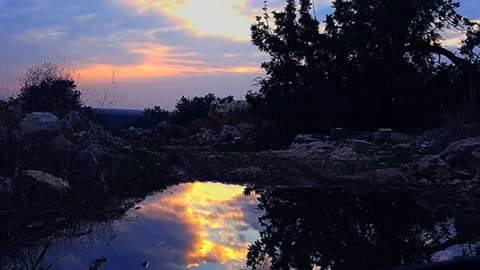
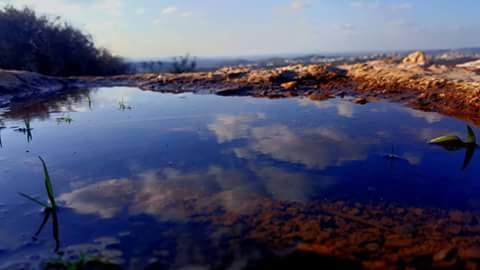

サルフィートの人々は、その恵まれた地で実る作物を糧として生活を営み、命を紡いできた。現在、労働人口の約30%が農業分野に従事しているが、それ以外の多くの人々も自分の畑やオリーブ畑を持ち、季節に合わせて収穫を行うファラヒーン(農村民※記事4参照)を主体としている。
「そろそろ、オリーブの時期だ」。なんとなく、パレスチナ全体から、緩やかなウキウキ鼻歌感を感じていた10月の或る日、友人ムハンマドが「来週家族総出で、オリーブ収穫するけど来る?」と、願ってもいない話を寄越して来た。「え、オリーブ畑持ってるの?」と聞くと、「おいおい、冗談はよしてくれよ。当り前じゃないか」と。そうだ、彼の出身地はオリーブで有名なサルフィート県のザウイヤ村だった。そういえば以前、彼の話すアラビア語の発音が農村方言だったので、「農村方言で話すのね」と聞いたところ、これまた「おいおい、冗談はよしてくれよ。僕はファラヒーン(農村民※記事4参照)だよ」と言われたことを思い出した。彼の出身地が農村部であることを忘れていたのだが、同時に、現在のパレスチナ、ヨルダン川西岸に住む多くの人々の基盤が農村部にあることにも、改めて気づかされた。
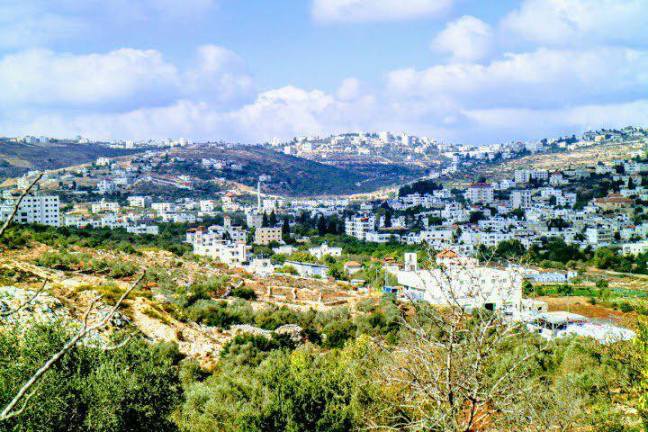
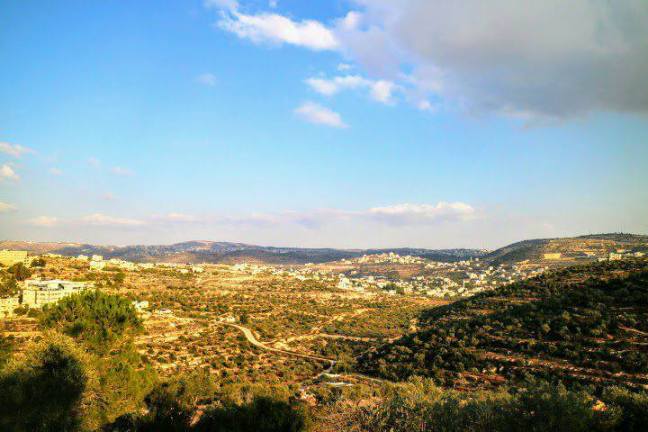
翌週、嫁ぎ先であるヨルダンからパレスチナに遊びに来ていた彼の妹とその子供を、道中で車に乗せ、ザウイヤ村に向かった。そう、私は、夏の終わり、短い秋の始まり感じながら、農村でオリーブを摘み、牧歌的な気持ちを味わいたかった。しかし、それを簡単にさせてくれないのが、このパレスチナ・イスラエルである。
パレスチナ自治政府の権限が及ばない、つまりイスラエルが権限を有するC地区に囲まれているザウイヤ村。村に行くためには、点在する入植地を右に、左に、イスラエルの管理する道路を通っていくしかない。パレスチナにいると、日常的にこの入植地やイスラエルの管理する道路による制限にぶち当たる上、これを無視することは不可能なので、サルフィート県を例に、入植地やイスラエル管理の道路について、少し、書いてみる。
オスロ合意にて、A,B,C地区に分けらたヨルダン川西岸。パレスチナ自治政府の権限が及ばないC地区は西岸地区の約60%を占めており、サルフィート県に至っては75%がC地区となっている。
※パレスチナ西岸 総面積 約5660㎢ オスロ合意IIにおいて、西岸地区(東エルサレムを含まず)はA、B及びC地域に3区分され、C地域は順次PA側に移管されることが規定されているものの、イスラエルは入植地や道路の建設を進めている。
A地区 18% パレスチナ自治政府 治安・民生双方の権限(人口の多い市街地)
B地区 21% パレスチナ自治政府 民生権限(主に点在するパレスチナの村)双方が治安権限(但しイスラエルの権限が優越)
C地区 61% イスラエル 治安・民生双方の権限(幹線道路、入植地周辺、砂漠、ヨルダン川渓谷沿いなど戦略的重要地域)
http://ccp-ngo.jp/about/salam/pdf/109_p6-8.pdf (参考)
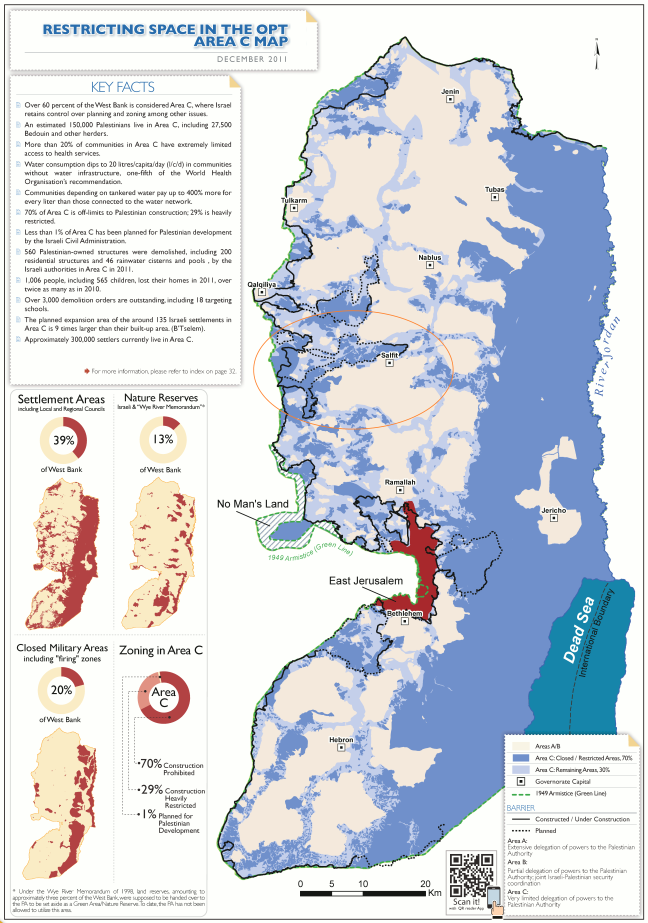
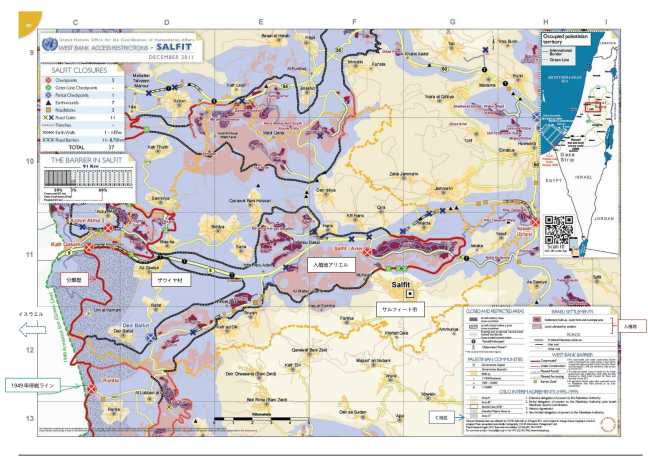
順次パレスチナ自治政府に移管されるはずのC地区であるが、イスラエルは、そのC地区内にて、国際法で不法とされている入植地の建設を行っており、入植地、またそれに類するものは東エルサレムを除いても西岸内で合計約200程に及んでいる。このため「現実的に、土地の移管は難しい」と考える人も多い。
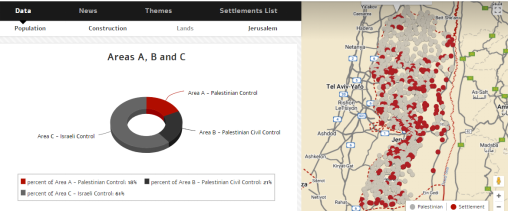
1949年停戦ラインを境界としてイスラエルと接しているサルフィート県は、空港、テルアビブ越しに地中海まで見渡せる立地であるためイスラエル人は「イスラエルのバルコニー」と見なしており、また水源が豊富であるため、イスラエル政府のパレスチナ西岸における戦略的土地政策、入植地建設主要対象地域となっている。
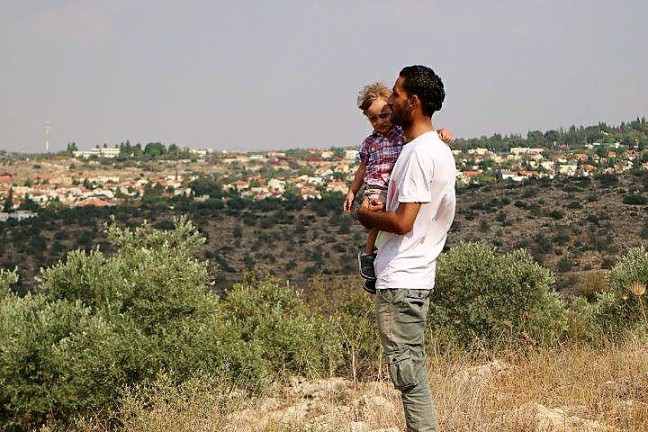

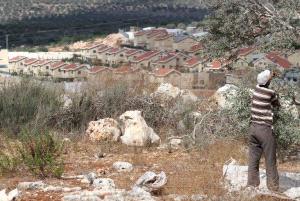

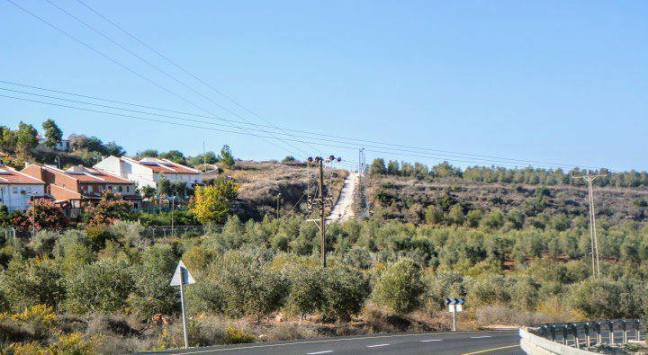
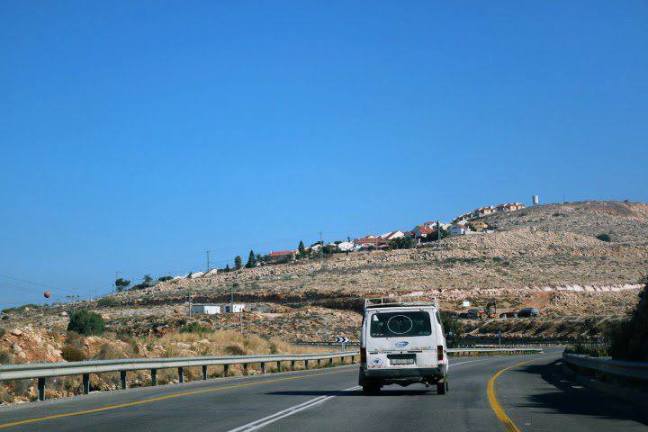
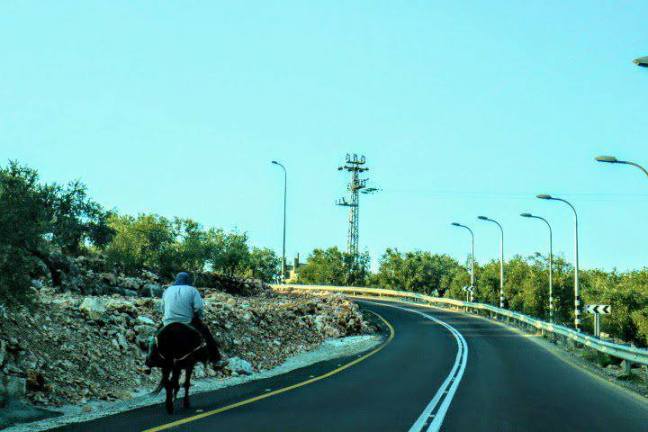
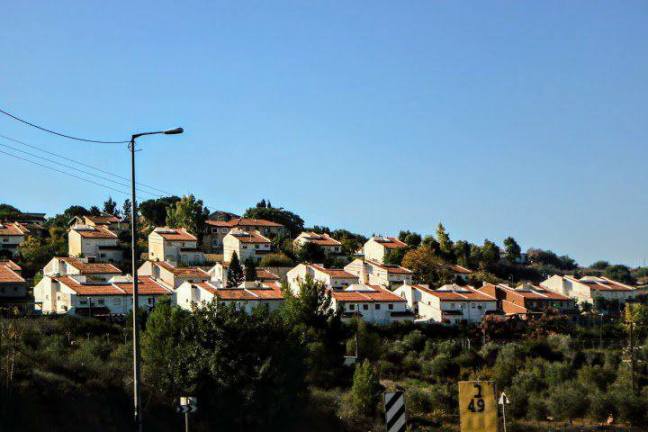
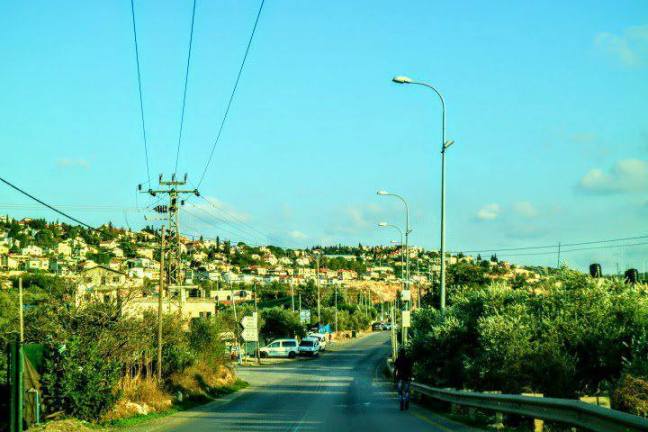
そのため2010年以降、県内における入植地の建設が急速に進んでおり、2002年に比べると入植地の数は400%増となっているそうだ。年々増える入植地はついに県内のパレスチナ人の村18に対して、イスラエルの入植地が24と、入植地がパレスチナの村の数を越えてしまった。入植地に囲まれた村出身のニザールは「故郷の村に向かう度、景色が変わる。地図に載っていない入植地が沢山できている。地図の更新が追い付いていない」と諦めともとれる表情で語る。入植地の増加に合わせ、西岸の入植地に居住するイスラエル人の人口も増える一方であり、例えば、1949年停戦ラインを約20キロ東に越えたサルフィート市の北方を塞ぐように建設されている入植地アリエルの場合、基本人口は2万人、加えて日中にアリエルの大学に通う生徒約2万5000人が加わるが、それに対しサルフィート県の中心都市サルフィート市の人口が12,000人である。
※1948年、独立宣言をしたイスラエルと、それを承認しないアラブ諸国との間で第一次中東戦争が勃発した結果、イスラエルは国連分割案より多くの土地を占領・確保し、1949年にアラブ諸国との間にて休戦協定が結ばれ、停戦ラインが定められた。この境界線は「グリーンライン」とよばれ、国際的に認知されているイスラエルの領土であるが、イスラエルはそのグリーンラインを越えて、分離壁や入植地を建設している。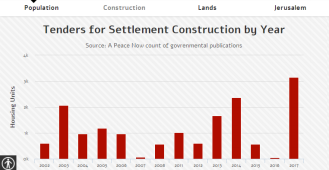
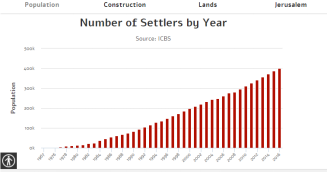
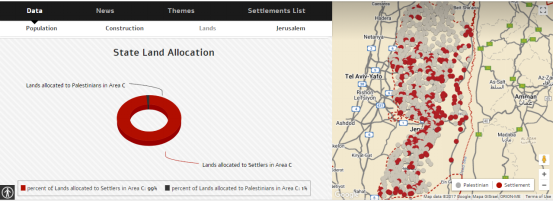
パレスチナ人の記者は「イスラエルはC地区内で入植地の行政機構が管理する管轄エリアを現在の40%から70%にまで拡大させようとしており、其々の入植地を拡大、合併させ、電線網、水道網、排水網などすべてのインフラをつなげようとしている」と話す。それら入植地のインフラは入植地同士を結び、イスラエルの「領土」を拡大させ、西岸の土地を分断し、西岸の村々を孤立させる。ムハンマドの住むザウイヤ村も入植地に囲まれているため、北から入るにせよ、南から入るにせよ、イスラエルが建設した入植者用の道路を通らなければならない。しかしそれらの道路の多くは、元々ユダヤ人、キリスト教徒、またイスラム教徒すべてを含むパレスチナ人の生活に密着した道路であった。ザウイヤへ車を走らせていると、入植地、そして掲げられたイスラエルの旗、兵士や軍用車両が目まぐるしく交差する。
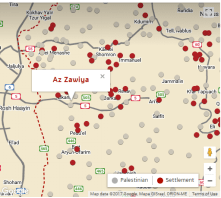
イスラエルが管理する道路を通っていると検問などで軍や警察に、車を止められることもままある。イスラエル兵も様々であるが、恫喝されたり、車両を調べられたりすることもあり、加えて入植者に道を塞がれ車を蹴られたことや、声をかけられたのに無視したために、車で行く手を塞がれ、マシンガンのようなものを持ち出された経験があること、またイスラエル兵が私のすぐ隣で発砲した経験もあることから、私は軍用車とすれ違う度に何となく、銃弾が飛んでくることを想定して気持ちの準備をしている。勿論普通は飛んでこない。
30年近く銃などの脅威に殆ど直面する機会のない日本で過ごして来た私であるが(修羅の国、福岡出身であれど)、パレスチナに来てからのこの2年ほどの間で、突発的な衝突やイスラエル兵によるパレスチナ人射殺、数は少ないもののパレスチナ人による狙撃などが、自分の生活圏内で発生すること、またパレスチナ人の友人や知り合いが巻き込まれたり、知っている場所で人が撃たれる場面や血を流す人の映像がSNS上で流れてくることから、無意識のうちにストレスを感じていたようだ。普段生活していると、それが日常になってしまい意識することはないのだが、日本に帰国した際に「わぁ、兵士がいない!銃を誰も持っていない!」という気持ちになった際に、無意識化で幾何か気持ちの負担になっていたことに気が付いた。日常の中で殆ど銃の脅威に晒される必要性のない日本ですくすく育った私が、こんな気持ちを持つなんて「本当に私、可哀そう」と思うものの、パレスチナ人は子供のころから、そのような環境で育っている。一方のイスラエルには徴兵制度が存在し、多くの国民が兵役につき銃を持ってパレスチナ人と接する経験を有する。中には占領に反対し、兵役を拒否する人もいる。また疑問を以て兵役につくものもいる。しかし、兵役を通じて、感覚が麻痺し、指令があれば暴力を執行し、また指令がなくても自発的に暴力を執行するようになっていく。このことは、「イスラエル」という国に住む国民自身の精神や考え方にも影響を与え、自らをも傷つけてるようにも思う。その薄汚れた緑色の制服の下から流れる自身の血に気が付かず、失血して死ぬまで、ただひたすら撃ち続けるように。
とは言えども、私は外国人であるので、その特権を以てしてある程度危機的な状況からは逃れられる気がするのであるが、パレスチナ人といると話は別である。外国人の私といるせいで止められ、尋問される可能性もあるし、また何かの間違いで撃たれたり、拘束されたり、危害を加えられたりする可能性もあり、女性や子供も全く例外ではない。もちろん、普通にしていれば問題ないのかもしれないが、本当に何の理由で何が起こるか分からないという気持ちが常にある。そのため、彼の妹とその子供を自分の車に乗せていた私は、入植地が点在し、オリーブ畑がイスラエルの道路によって分断される道路で車を走らせる間ずっと、1人の時より、大変気を使いながら運転していた。
そんな私の気持ちを他所に、後部座席に乗る彼の妹は、子供をあやしながら、すいすいとイスラエルの道路の道案内をする。イスラエルの管理する道路を使用してでしか、故郷に帰ることの出来ないパレスチナ人の日常がそこにある。
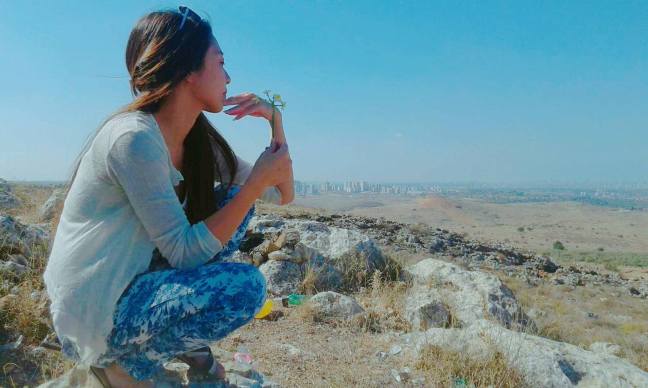
Visiting olive fields through settlements, roads under Israeli control and Area C.
When I started to write about Olives in Palestine, I was planning to divide the article into two parts. I wrote the first part in the latest article that I published in my blog entitled “Olive trees in the Promised Land Canaan”. In this article, I was going to write the other half of the story “Olive picking in Palestine”. However, it looks like this part is going to be longer than I expected because I feel like it is difficult to write about Palestinian olive fields without mentioning the roads under Israeli control and Israeli settlements which divide Palestinian land, which I have seen everywhere in the West Bank. Therefore, I will discuss the second part of the topic in this article, which is about the roads and settlements under the Israeli control, then I will add one more article related to Olives in the third part, which will be about Olive picking in Zawiya village. This way, I hope the readers can see a clear structure of these articles.
In the land of Olive Palestine (Ref. Article No.5), especially, Salfit governorate is famous for the Olive products in West Bank bordering with Israel. Salfit has a deep history that we can trace back to 15th century B.C. in the Canaanite era. The word“Salfit” itself consists of two syllables; “Sal” meaning baskets and “Fit” meaning grapes in the Canaanite language. As its name suggests, historically, this area has been known for its grape, fig vines and its ancient wine presses. Now Salfit is famous as a producer not only for grapes but also Olive, Almonds, and figs due to its rich water resources. Salfit’s rich natural characteristic reminds me of the image that Moses mentioned to the Israeli when they were roaming around the abandoned land.However, due to the rich natural resources, Salfit has been targeted by Israeli Land domination policy.
and houses full of all good things that you did not fill, and cisterns that you did not dig, and vineyards and olive trees that you did not plant—and when you eat and are full, (Deuteronomy 6:11)
For the LORD thy God bringeth thee into a good land, a land of brooks of water, of fountains and depths that spring out of valleys and hills;(Deuteronomy 8:7)
A land of wheat, and barley, and vines, and fig trees, and pomegranates; a land of oil olive, and honey (Deuteronomy 8:8)
※Salfit was established in 15th B.C. Salfit’s residents are the descendants of the Bani Nimra family, originating from East Jordan. The city is also home to members of the Al Hawatra family descended from the prophet Al Abbas. They left Al Hijaz in Saudi Arabia, travelled through to East Jordan, then moved to the neighbouring village of Farkha before residing in Salfit city, which includes Khirbet Qeis locality. Salfit profile
On this land blessed with natural resources, the residents of Salfit have been relying on rich agricultural products for their livelihood. Currently, 30 percent of Salfit’s labour force works in the agricultural sector. But apart from these labour workers, many of the residents own land and receive the nature’s blessed products. I might say the main part of Salfit’s residents are Falaheen which means agricultural village people who have played an important role in Palestinian history (Ref. Article No.4 ).
‘The olive season is coming’.
I felt cheers and joy covering the whole of the Palestine in October.The heart of the people and even nature were joyful. They sang because they had been looking forward to the olive harvest season. One day in October, my friend Muhammad asked me :‘Will you come to pick the olive? Our family will do it next week’. Wow… what better chance could I wish for? But I wonder if his family owns the olive field? So I asked:‘You mean you have Olive farm?’. He answered:‘Come on, what are you saying. Of course, we do ’. And yes, I remember he is from a village in Salfit which is known for its Olives. Then, I recalled a conversation with him where I noticed that he spoke with rural Palestinian accent, and I mentioned it to him. He replied: ‘Hey come on, I am a Falaheen (Village people Ref. Article No.4 )’. I completely forgot that he is from the village because of his behaviour and his way of thinking, but at the same time, I reconfirmed that the background of many Palestinians are‘Falaheen’in rural areas.
In the week after that, I picked up his sister and child on my way to Zawiya village in Salfit. To go to Zawiya, which is surrounded by settlements, we had to use the road under Israeli control which has been used by all local Palestinians without any restriction before. If you live in the West Bank, you cannot ignore the fatal connection between Palestinian land, Israeli Settlement and Israeli controlled roads. Because the roads would be blocked and closed for any reason, and the soldiers would check your ID, car, and they will ask you questions, such as, “Do you have the weapons?”. I simply wanted to pick olives and feel the end of summer and the beginning of Palestine’s short autumn in the field. However, here I am in Palestine-Israel land where the environment is not so kind to let me feel pastoral peace. Due to these reasons, I want to discuss Palestinian land divisions and settlement briefly.
The West Bank has consisted of three administrative divisions by Oslo II Accord.
Area A:18% Full Palestinian civil and security control Area
Area B: 21% Full Palestinian civil control and joint Israeli Palestinian security control
Area C: 61% Full Israeli control over security, planning and construction.
In the West Bank, about 60% of the land is Area C, which is not under Palestinian Authority’s control. According to the agreement, the authority of Area C was supposed to be transferred gradually to Palestine by Israel. However, Israel continues the construction of settlements in Area C, and those settlements, which are considered illegal under international law, are still expanding. The connections between these settlements are growing as well as the number of the population of the settlers. In Salfit governorate 75% of the lands are Area C, and the number of settlements increases dramatically especially since 2010. It was 400% increase if you compare it with the number of settlements in 2002. At this point, finally the number of settlements in Salfit, which are reported to be 24 settlements, already exceeds the number of Palestinian villages, which are only 18. As the numbers of settlements grow, the number of Israeli settler population grows too. One of the main settlement in Salfit is the fourth largest settlement in the West Bank called Ariel which is located 20km east of 1949 Armistice border (the green line). Ariel blocks Salfit city from the north and it currently has 20,000 population with 25,000 more population consisted of students of Ariel University during the day. As a comparison, Salfit city only has 12,000 residents.
Due to Salfit governorate’s strategic locations, its direct borders with Israel, and its rich water resources, it has been targeted by Israeli settlements construction policy including the building industrial zones. It is said that the percentage of the land allocated for Palestinian people to build on in Salfit city is only 6%, while settlers are given 9% of the land. This means the portion of each Palestinian individual is 150 square meter and for each settler gets 700 square meters. As a Palestinian journalist said “Isreali side try as much as possible to build settlements and it may reach 70% of Salfit’s land. It already reached 40% now and day by day, settlements are extending and connecting with other settlements, especially, in roads, water, electricity and drainage systems”.
Palestinian villages that are surrounded by settlements such as Zawiya are always threatened by the fear that they will be pushed out by those Israeli settlements and roads.
http://english.wafa.ps/page.aspx?id=9LQ649a52064696112a9LQ649
http://www.wafa.ps/ar_page.aspx?id=ozqeCDa737970241140aozqeCD
http://www.btselem.org/settlements
http://www.pcbs.gov.ps/site/803/default.aspx
While driving on the roads controlled by Israeli, sometimes I had to stop at the checkpoints where soldiers or border police conduct sudden inspections on the road because of numerous reasons. The soldiers have different characteristics of course, but I personally had some bad experiences with them. For example, they sometimes shouted at me, or treated me with no respect, investigated my car and so on. In addition to this, I had a group of settlers stopped and kicked my car on the road. Another settler suddenly blocked my way using his car from another side, he got out from his car and carried machine-gun in front of him just to show me because I ignored him when he greeted me from his car. And even worse, an Israeli soldier fired his gun next to me when I mistakenly drove between the Palestinians and the Israeli soldier (My car navigation brought me there, and I was passing exactly on the way between Palestinian youth and Israeli soldiers when they face each other). It was my fault though, but it made me prepare for anything that might happen when I drive through military cars or settlers. Perhaps, nothing will happen but I do it automatically just in case these incidents happen again.
Nearly 30 years of my life in Japan, fear of guns or shooting was far away from me. Even if my hometown area is kind of famous for Yakuza (Japanese Mafia). However, after two years living in Palestine and Israel, gun incidents become closer to my life. Here, the shooting and other incidents often happen anywhere, and people I know personally have been involved in these violent incidents. In addition, the numbers of videos and images which show people being shot, or bleeding, struggling and dying are overwhelming. These videos have come through SNS and they are generally not shown in Japanese media. Once I went back to Japan, my first impression was‘Wow, no soldiers! No one has gun’. This time I realized that I was unconsciously stressed because of such environment even though it was not obvious and I did not feel that while I was Palestine and Israel. I felt so sorry for myself because I grow up in a healthy and safe environment in Japan and did not have to feel such stress caused by violence. However, one thing to note is that all Palestinian grow up in this situation since they were born. At the same time, there are Israeli who are against their government policy of occupations to Palestine and refuses the call-ups. On the other hand, many young soldiers who had doubt about using violence to Palestinians started to lose such feeling through their mission in the army. In my point of view, this situation also hurt Israeli people itself out of their consciousness because they deal with Palestinian violently with the gun and power.
Despite the situations I mentioned above, I still have some sort of confidence that I can escape from serious or dangerous situations because I am a foreigner, I am not Palestinian or Israeli. But I always feel some kind of responsibility and anxiety when I am with Palestinians because there is a possibility, the Israeli soldiers might stop us because I am a foreigner driving a car which has different number plate than both Israelis and Palestinians. Besides, anything would cause escalation between Palestinian and Israeli soldiers such as shootings towards any Palestinians including women and children.
Therefore, I am much more careful when I was on my way driving to Zawiya.
This girl sat in the rear seat who is my friend’s sister on her early 20s, probably had no idea about my feelings, since she directed me to drive my car to the roads under the Israeli control which also led us to the settlements. Of course, she had no other way of giving me direction, because this is the daily life and fate of every Palestinian’s life.
